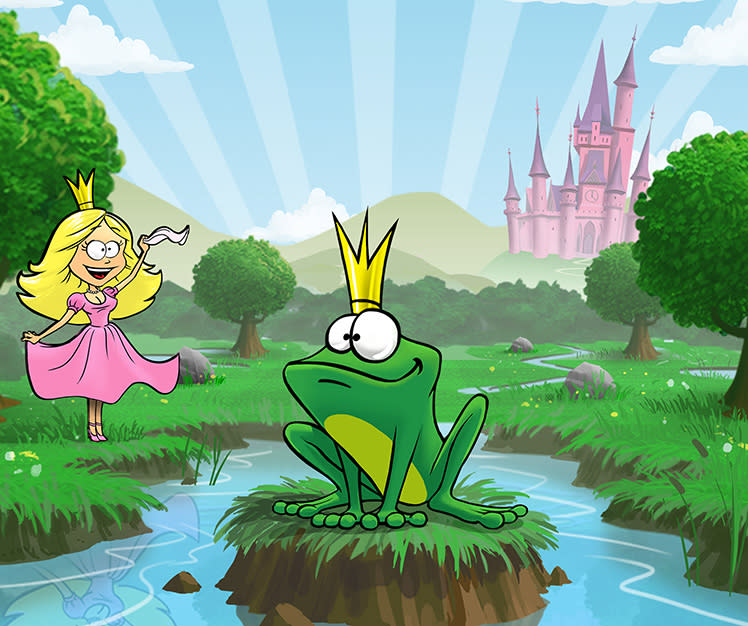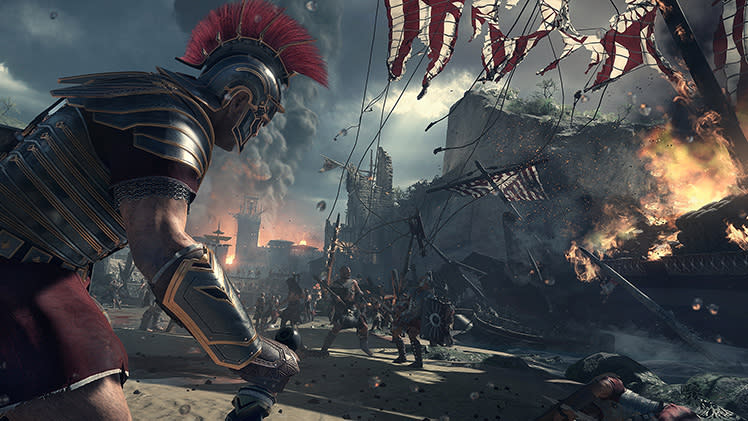From Crytek to Brain+: Rasmus Højengaard’s startup journey
How did Crytek’s former Creative Director go from alternate Roman history slaughterfests to university-sanctioned brain-training app?
The name Rasmus Højengaard may not be familiar to some, but you may recognise the video games he previously worked on: the Hitman series, the Crysis games, and the Xbox One exclusive Ryse: Son of Rome. After 17 long years doing 3D work and being a Creative Director for these projects, the former Crytek developer felt that it was time to move on to more interesting things. Like creating a minigame-filled app that trains a brain to sharper levels.
Enter the Brain+ app for the iOS (soon to launch for Android in the next six months), a Denmark-made project by a startup called, well, Brain+. The company was founded early 2014 alongside his veteran colleagues Kim Baden-Kristensen and Ulrik Ditlev Eriksen (both formerly from Vestas Wind Systems A/S).
Højengaard told e27 that the startup’s main intention is to create an application that doesn’t make the user feel like he or she is “going to the gym”. “[We’re] marrying two important things that are very big these days: playing games and being entertained, and taking care of yourself so that you can live a long and healthy life.”
Of course, this wouldn’t mean anything if there wasn’t any scientific grounding to base the app on. That’s the biggest and right kind of challenge Højengaard and his team faced. “Creating new content [for Brain+] takes us longer than if we ‘just did a game’. Every time we want to design a new exercise, we have to do thorough due-diligence with our team of scientists at Copenhagen University.”
His team collaborated with University of Copenhagen’s Head of Research Postdoc Inge Linda Wilms, Cognitive Psychology Postdoc Simon Nielsen and Head of Unit of Cognitive Neuroscience Professor Jesper Mogensen. The minigames in Brain+ include Captain’s Challenge that deals with visual short-term memory, Remember Me that focuses on improving long-term memory, and Fresh Frog that handles problem-solving and tactical planning.
In terms of spreading the word about Brain+, Højengaard said that his team did a fairly small marketing and PR push in Denmark, though the app got a lot of downloads and had good retention numbers. “Basically, one per cent of the entire Danish population (not the iOS part of the population) has downloaded the application. So if we transferred that number globally, it looks very promising indeed.”
It isn’t all sunshine and roses, as the Denmark-based company’s biggest hindrance is localisation. “We’ve only localised to a few languages and not all countries are equally strong in English,” said Højengaard, “I would probably say though that how much a populous would use the App would tie into how much focus on mental health that country has. This is not equal across the globe. USA, for example, has a huge focus on mental health and of course that will resonate with the populous.” It is too early to tell for Brain+, as the app is still fresh.
Small is big
There are a lot of news from the recent Game Developers Conference about veteran designers trading giant studio triple A game-making spaces for humbler indie-sized offices. Højengaard did the same after finishing Ryse, but his reasons weren’t anything specific like burnouts or crunch fatigue. “I like doing different things and throughout my 17 year career, I’ve always switched between working with larger organisations and doing my own thing or working in smaller startups. There are upsides and exciting aspects in both, and I like to use what I learn in one within the other.”

Fresh Frog is one of the titles in the Brain+ app that helps develop better problem-solving skills. Image credit: Brain+
Read Also: Epic Games and Crytek offer game engine subscription plans
But the one main reason was to be back to his hometown of Copenhagen, Denmark. “I had been away for almost five years and when this opportunity with Brain+ manifested itself, I thought it would be a perfect way to marry both those two things. One, it sounded like a really interesting project and two, (Co-founder and CEO) Baden-Kristensen is one of my oldest friends — we went to elementary school together and I welcomed the chance to work with him,” said Højengaard.
His startup is vastly different from the triple-A game development environment. “The number one upside of a small company is the speed at which decisions can be made,” he said, “Working at Brain+, I really like that it’s a small team of people who are closely knitted together and who are more or less involved in every aspect of the business and products. It ensures that you really understand what you are doing and why, and you can immediately see the ‘cause/effect’ of decision-making, which in itself has a much shorter churn than in a big organisation.”
Not just video games
Even if he’s away from the triple-A game scene, he still believes that this year is exciting for different avenues of gaming thanks to the existence of new consoles such as the PlayStation 4 and Xbox One. “It’s almost getting to a point where the ‘concept of video games’ resonates a bit weirdly for me in the sense that ‘all of it is called just games’. Why is that? Because the software is so vastly different!,” he said.
“Apart from all of it being software running in real-time and entertainment, there really aren’t any other similarities between, for example, Candy Crush and Skyrim. It would be like comparing Breaking Bad with a documentary on animal life or a low budget YouTube sitcom — sure they are all running on a screen, but apart from that have nothing in common except competing for your time,” Højengaard added.
He believes that the new current generation is part of a paradigm shift, “Right now, I feel like they are a bit behind the curve in some areas, but I’m sure they will catch up. If they manage to find a neat way of integrating user-generated content akin to how the AppStore works and have a really short turn-around when it comes to new content, and be a little less closed as a community, then I believe they will find a really good sweet spot.”

One of the games Rasmus Højengaard worked on before his switch to brain-training games. Image credit: Microsoft
Read Also: Former Microsoft Creative Director on “chilling” internet toxicity
Too many chefs spoil the broth
There is room for creativity in triple-A settings, but it’s less on the space itself and more on how many chefs are cooking in that space, Højengaard said, “First of all, everyone who contributes financially to a game rightfully feels they should have a say in the creative direction of the product. Although this can sometimes be good and provide great help to the teams, it can certainly also dilute the quality of the idea when too many get involved. This is not unique to games, but is more of a universal rule: Creative direction by a large committee isn’t good.”
Having a development team of 150 people or more means many leads and directors who have to take part and be responsible in the creative vision and direction, ergo a unified understanding of the project. Højengaard said that information is needed to trickle down to every team member equally. “The effect can be just like telling an urban legend; every time it goes to another ear, the perception of value changes slightly. There are tools to minimise this problem of course, but the larger the team, the more challenging it becomes in that regard. So generally, if you’re a huge team that works on a project for many years, maintaining original and continuous creative vision just becomes harder,” he said.
To sum up the question of creativity in the triple A space, Højengaard said that the setup and business goals of triple A companies are not always in support of taking too many creative risks, which is what indie is all about. He said, “When you’re a smaller outfit, you need to yell louder and differently to be noticed, and being really original conceptually is one way to do that. You see this issue in the movie industry as well. If you want to experience a really original movie, where the status quo is being challenged, then you don’t go see a triple-A blockbuster, right?” He brought up the Call of Duty and Grand Theft Auto series as examples of blockbuster games that are polished and have a vision that targets a broad audience.
Its all about quality
Højengaard also believes that originality in video game-developing is not in itself a quality unless you’re doing art, “I believe that sometimes you want to be overwhelmed and impressed by novelty and sometimes you want a predictably comfortable experience. The same reason you enjoy being told the same story over and over again in movies. For me, the important factor is always quality — no matter what you do, triple-A or indie, it needs to be of high quality and with a clear and understandable vision. For me that is a lot more important than just coming up with never-seen-before concepts.”
For those planning on breaking away from the bigger game development scene and starting up small, Højengaard said that these people need to do two things: to maintain the confident feeling of breaking out and doing something for themselves despite the risk and difficulty, and pairing up with experts. “If your business relies on aspects that are essential but you are not an expert of, don’t assume that you can do it alone — get great people involved who can help lift the project and set it apart from the competition and don’t be afraid to share the cake with these people. It’s better to have half of a success than all of nothing,” he concluded.
The post From Crytek to Brain+: Rasmus Højengaard’s startup journey appeared first on e27.



